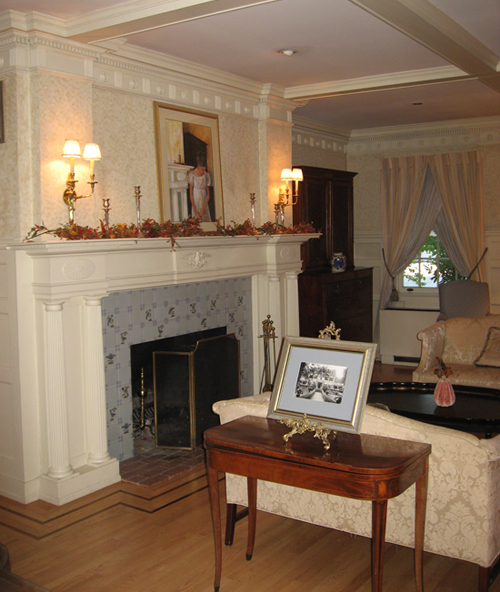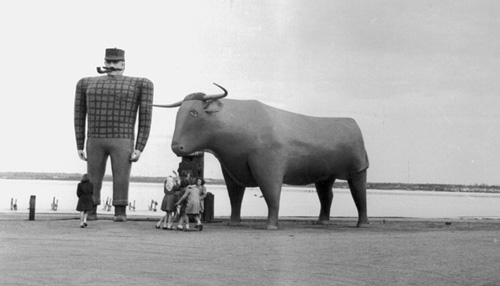What’s On Your Forest History Vacation Bucketlist?
I’ve just returned from Connecticut, where I spent time at Yale University conducting research in the Yale Forest School papers and also visited Simsbury, birthplace of Gifford Pinchot, to see the world premiere of the new film, Seeking the Greatest Good: The Conservation Legacy of Gifford Pinchot. Produced for PBS, Seeking the Greatest Good effectively weds together two different films—a biography of conservationist Gifford Pinchot with an overview of the Pinchot Institute, the organization created to not only preserve but expand upon his legacy, and its outstanding conservation projects. It’s expected to air next year on PBS stations around the country in part to mark the 50th anniversary of the founding of the Institute. Like the film Green Fire, which is about Aldo Leopold and his conservation legacy, Seeking the Greatest Good speaks to a national audience by looking at local environmental projects; these projects serve as reminders that the conservation work begun by Pinchot, Leopold, and others remains vital and help protect what’s at stake for all of us, regardless of where we live. Be sure to look for Seeking the Greatest Good, and if you don’t see it listed, call your local PBS station and demand they air it. Also keep an eye out for local screenings or try to organize one once the film is available.
###
With the trip coming just after Labor Day and the traditional end of summer, discussion turned to a forest history vacation bucket list—places to visit and things to do relating to forest history before going to that great forest in the sky. With this trip I was visiting two places I’d already checked off. The Eno home in Simsbury where Pinchot was born is now a B&B, so you can go inside, though when I did a few years ago the clerk was unaware of its connection to greatness. No matter. It’s quite lovely, as you can see.

The Eno house, birthplace of Gifford Pinchot, belonged to his mother’s family. It’s now the Simsbury 1820 House, and you can stay there. (Courtesy of the author)

The Eno house, now known as the Simsbury 1820 House. (Courtesy of the author)
The other box already checked was Yale, home to the oldest continuously operating forestry school in North America. The school was founded by the Pinchot family, and the original school building (Marsh Hall) still stands, as do the other subsequent homes to the school, including Sage Hall. Other Pinchot-related places on the list include Grey Towers NHS in Milford, PA, Pinchot’s estate and home to the Yale Forest School’s first summer camp site, now operated by the U.S. Forest Service, and of course the Cradle of Forestry in America historical site and Biltmore Estate in Asheville, NC, where Pinchot started his forestry career. (Be sure to read the book by the same name before going!)
But the bucket list is about more than GP or the Forest Service, though many places on that list are certainly tied to Forest Service history. As we tossed around places to visit, the homes of other great conservationists and related sites quickly came up: Aldo Leopold’s Shack in Baraboo, WI, and his boyhood home in Burlington, Iowa; John Muir’s home in Martinez, California, and his boyhood home in Wisconsin (as well as Hetch Hetchy Dam in Yosemite National Park and Muir Woods); and Sagamore Hill, Theodore Roosevelt’s home on Long Island (along with his North Dakota ranch and his Manhattan birthplace.) Some bucket list sites we’ve already blogged about—like the Pulaski Tunnel and Mann Gulch—others, like the site of the New York State College of Forestry’s experimental forest near Tupper Lake, NY, we haven’t yet. And of course I work at one of these—Peeling Back the Bark Worldwide Headquarters in Durham, NC. These are all places I’ve been. But I’ve not yet been to the World Forestry Center in Portland, OR, and its outstanding Discovery Museum; or Smokey Bear Historical Park in New Mexico, where they found the bear cub that became the living embodiment of Smokey Bear in the 1950s; or the Sawmill Museum in Clinton, Iowa, for the museum and Lumberjack Festival. I think them worthy of a place on the list. I’ve been to a TimberSports competition, which is also on the list for things to do, but haven’t been to a forest festival or visited any of these Paul Bunyan statues to celebrate the contributions of the forest and wood products industries to forest history.
We have lots of other places and events on the list. But I want to hear from you. What sites might be found on your forest history vacation bucket list? Please share them in the Reply section and tell us why we should go there—why is it so significant that those interested in forest history would want to see it before taking that great spiritual log drive to the great beyond? Perhaps if it’s intriguing enough, like driving on Cleveland’s woodblock-paved road, your idea may become a “History on the Road” column!


